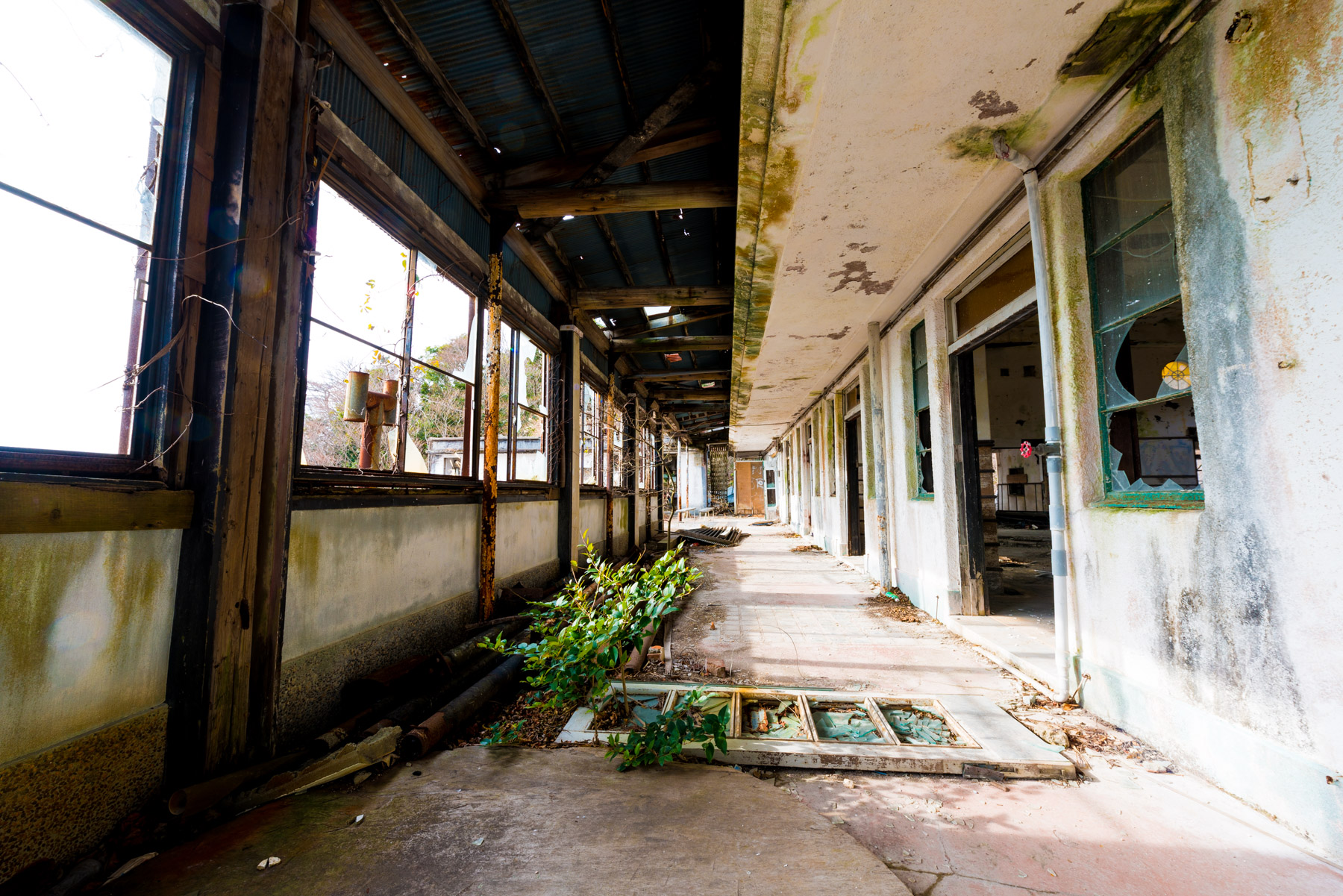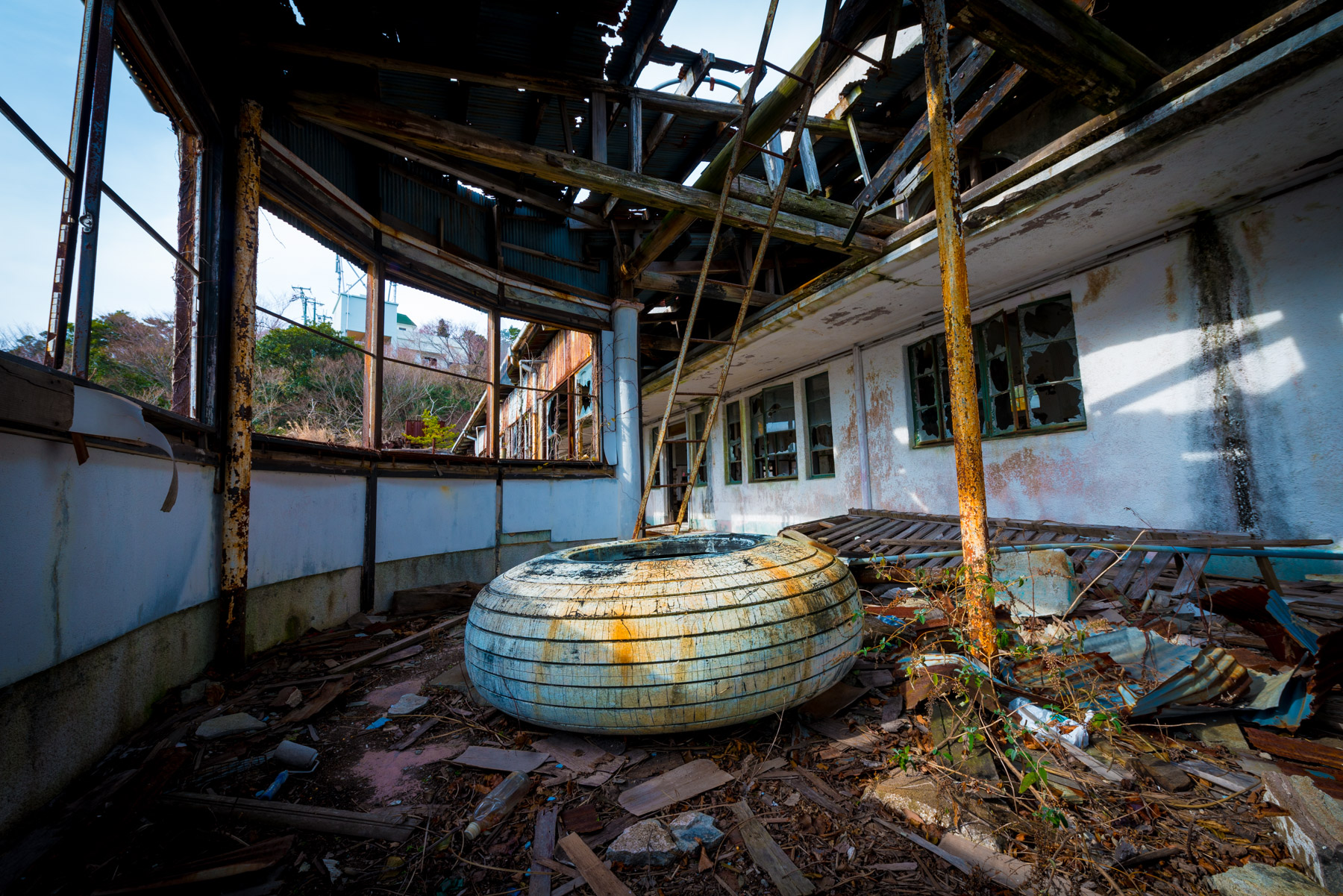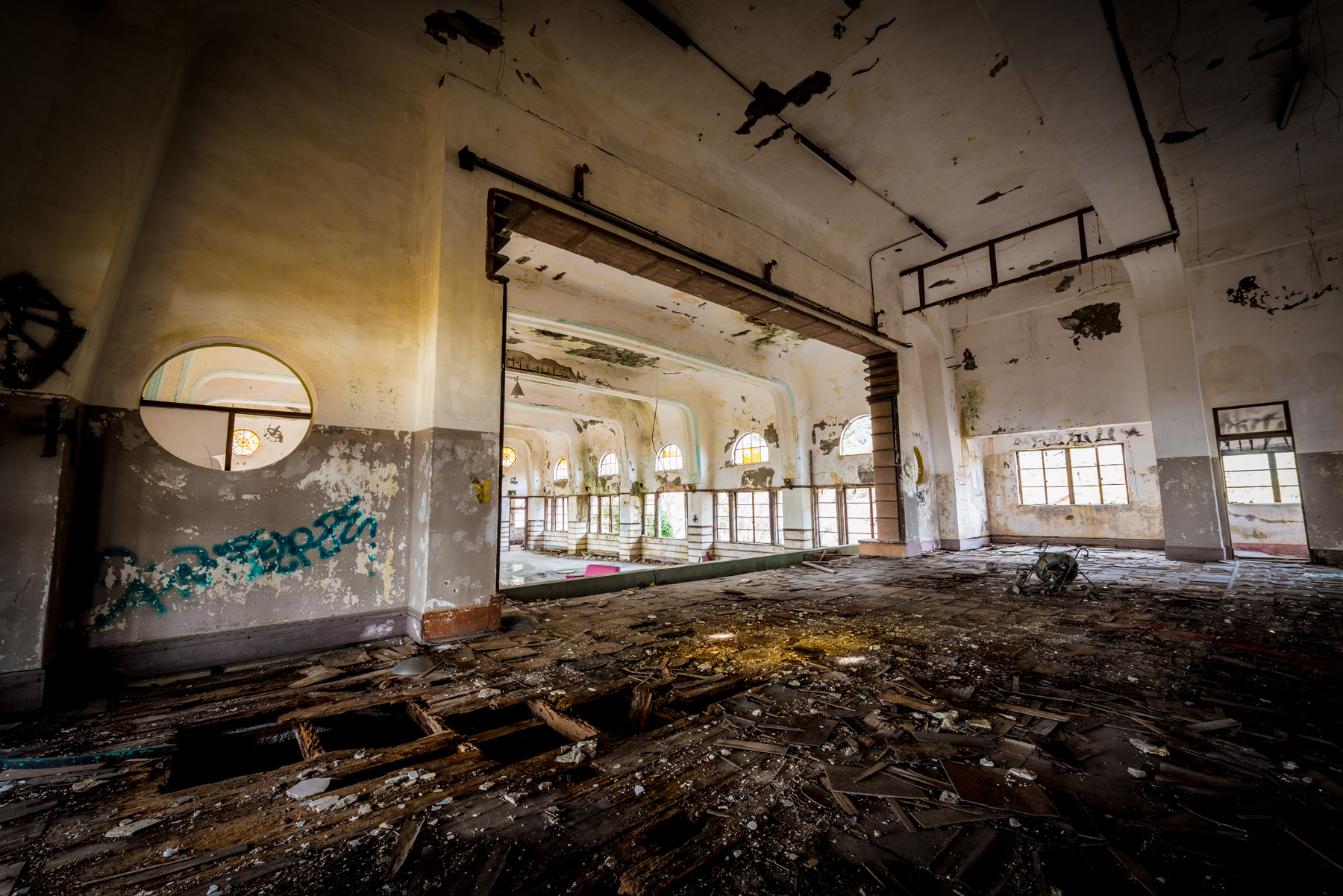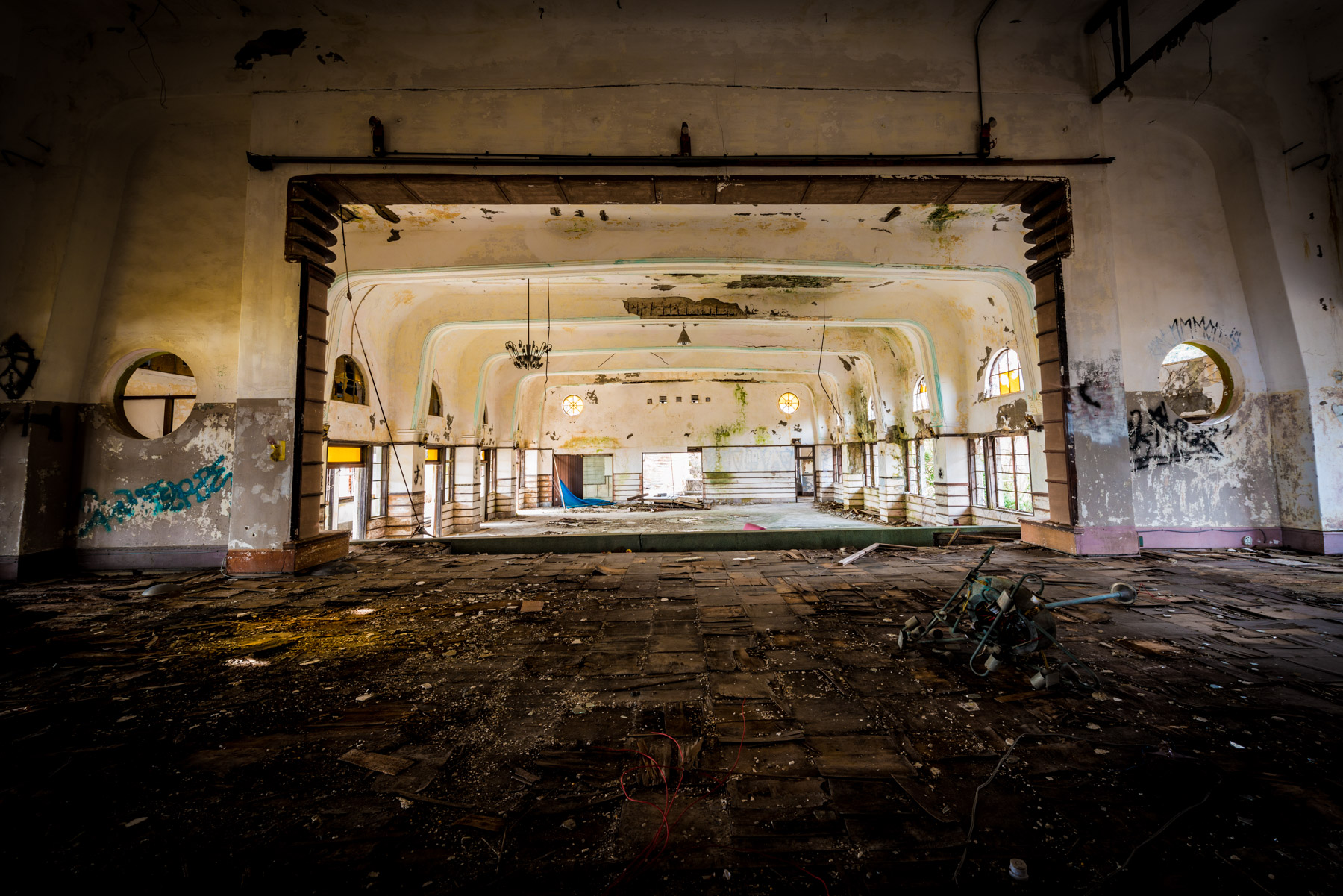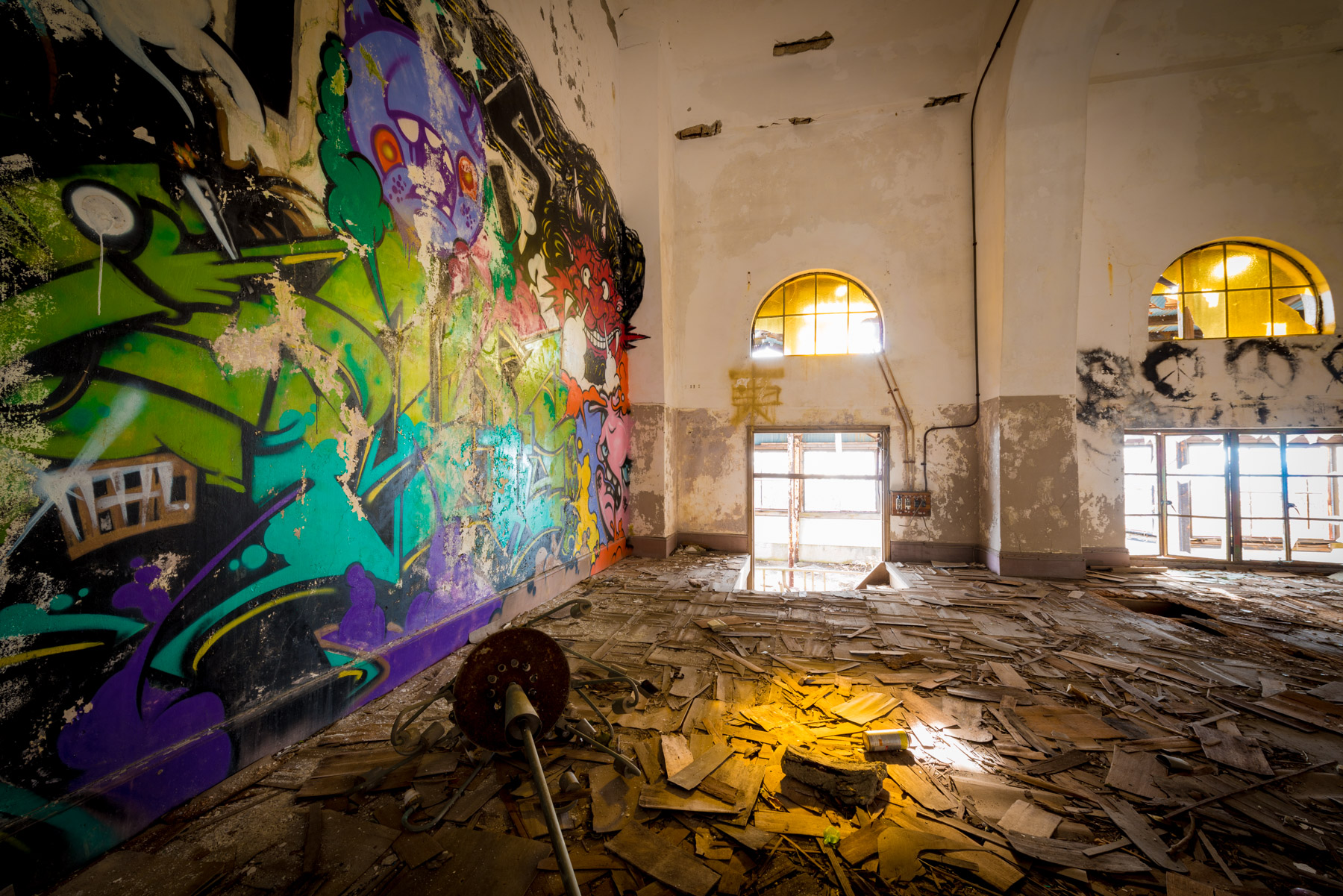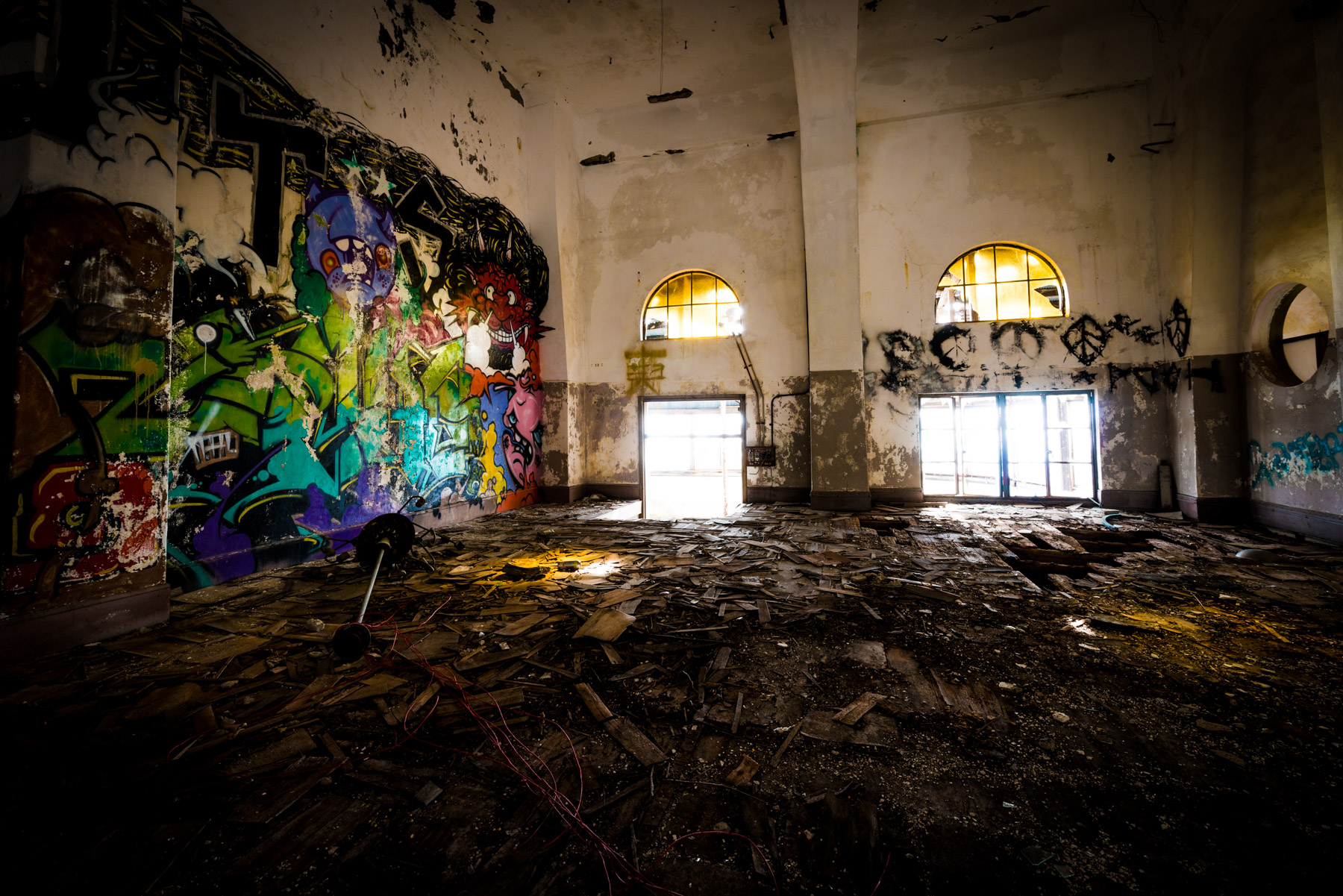Maya Hotel (摩耶観光ホテル), aka Mayakan, is a celebrity of all Haikyo in Japan. So many people have been there, done all sorts things, took all sorts of photos you can imagine. For those who like haikyo, the Maya Hotel cannot possibly be missed. I went to the Maya Hotel twice, once using the Maya Ropeway which leads the lazy explorers straight to the place, and the second time through a forbidden hiking path. The second option is more interesting and makes the place more magic and enjoyable.
It was opened originally as social benefit for the ropeway company, four years after Maya Ropeway started their business. There are buses and road leading to the top of Mt. Maya, but they all end at Hoshi Station, the last stop of the ropeway. Maya Hotel is actually in the middle of the ropeway, and no road besides the dangerous hiking path, is leading to its doorsteps.
Even if it has been opened a long time ago, it did not remain open for long at all. During its years standing, it suffered great injuries from the air raid during World War II, the Great Hanshin Earthquake and various other disasters like typhoons. It was shut down, sold, rebuilt many times, things never worked out very well. It has even been a haikyo already once before. It got abandoned for 15 years after WWII.
We all know a tire from a heavy bomber somehow found its way on the balcony of Mayakan. If you check old photos taken in 2002, you will find that this tire was once stuck on the rooftop. There is a popular belief assuming that the tire was dropped here during the air raids in WWII but the tire was used as some kind of decoration. It is even seen in a music video of a band called Action. It looked rather fixed to the ground, but I suppose the typhoons and all the other nature disasters did the job to move it after all.
The symbolic place of Maya Hotel is the green room. This is the destination for all photographers visiting Maya Hotel. The floor is completely decayed and seems to have sunken quite a lot. Apparently, before the war, the Green Room was a bathroom with old fashioned bathtubs made out of tiles. Then they stopped using it and the floor was laid on top of the bathtubs. Now, looking at the state of the floor, there are big holes everywhere on the rotten wood. But the best about this room is the extraordinary lighting it has. The windows always seem to glow the greenness of the nature outside, even in winter. I also have been told that the ghosts of the waiters are still working around while a few customers are dancing. That must be a beautiful sight.
FACTS
- 1929 – 1994
- Nihon No Haikyo: 145
